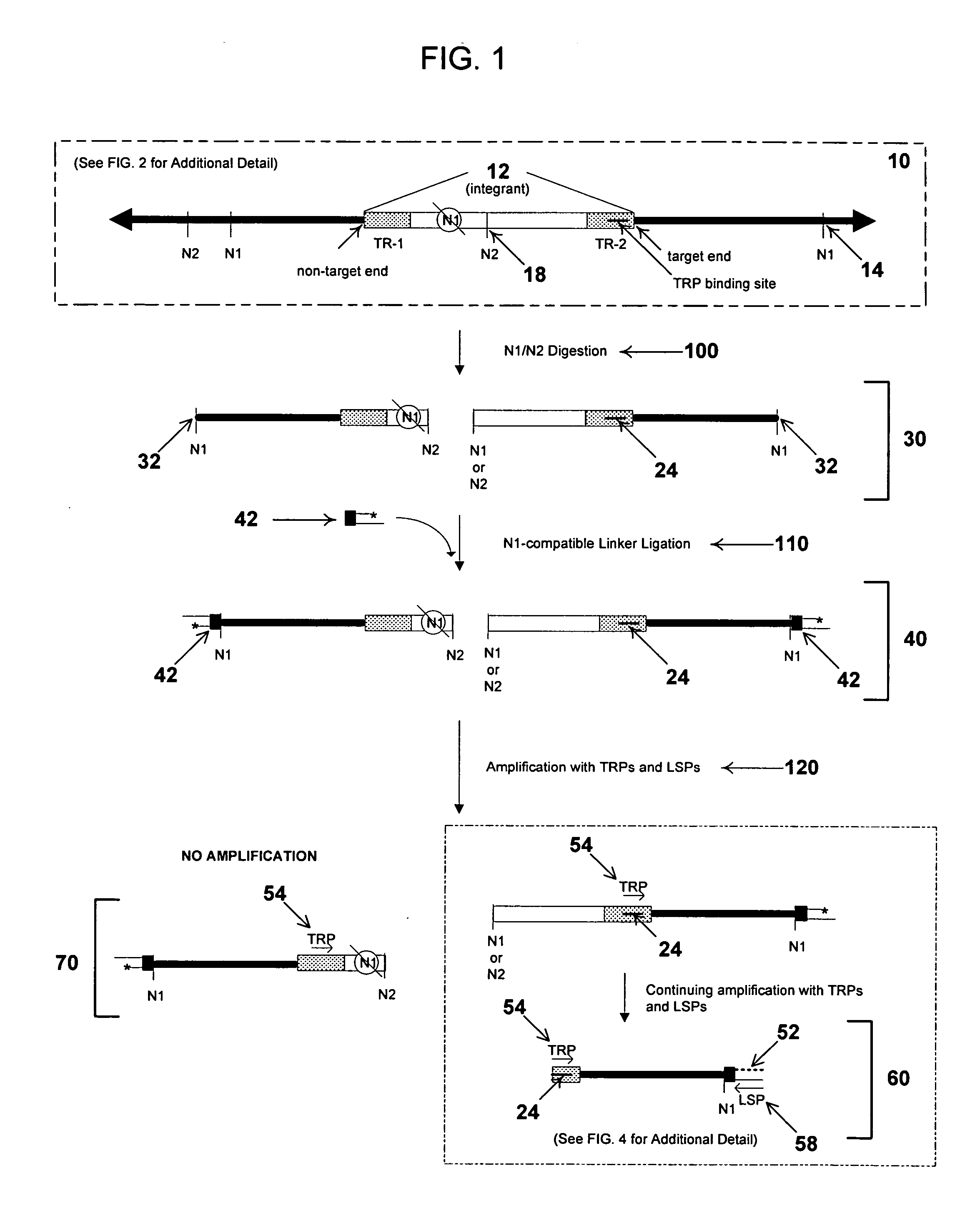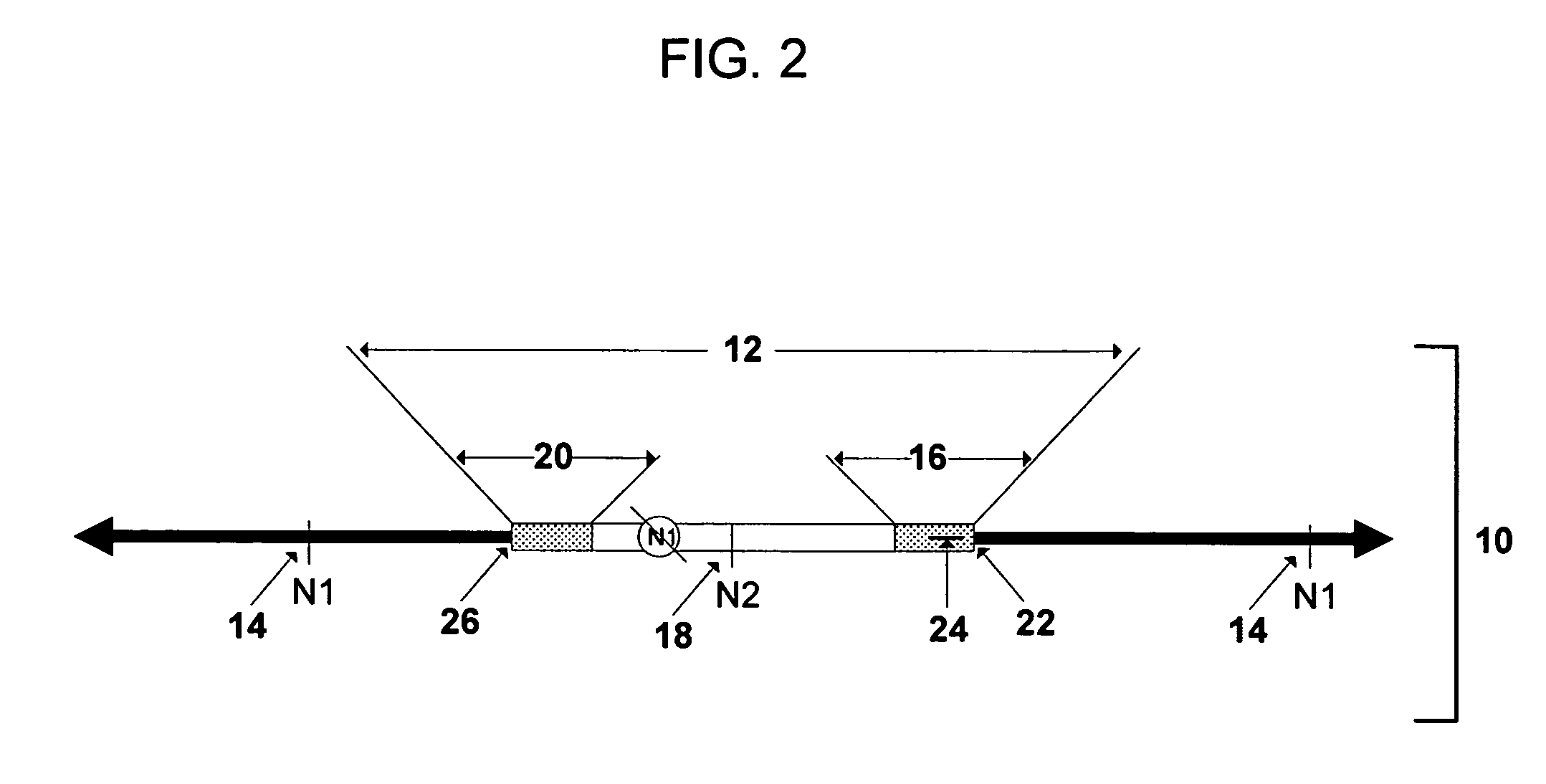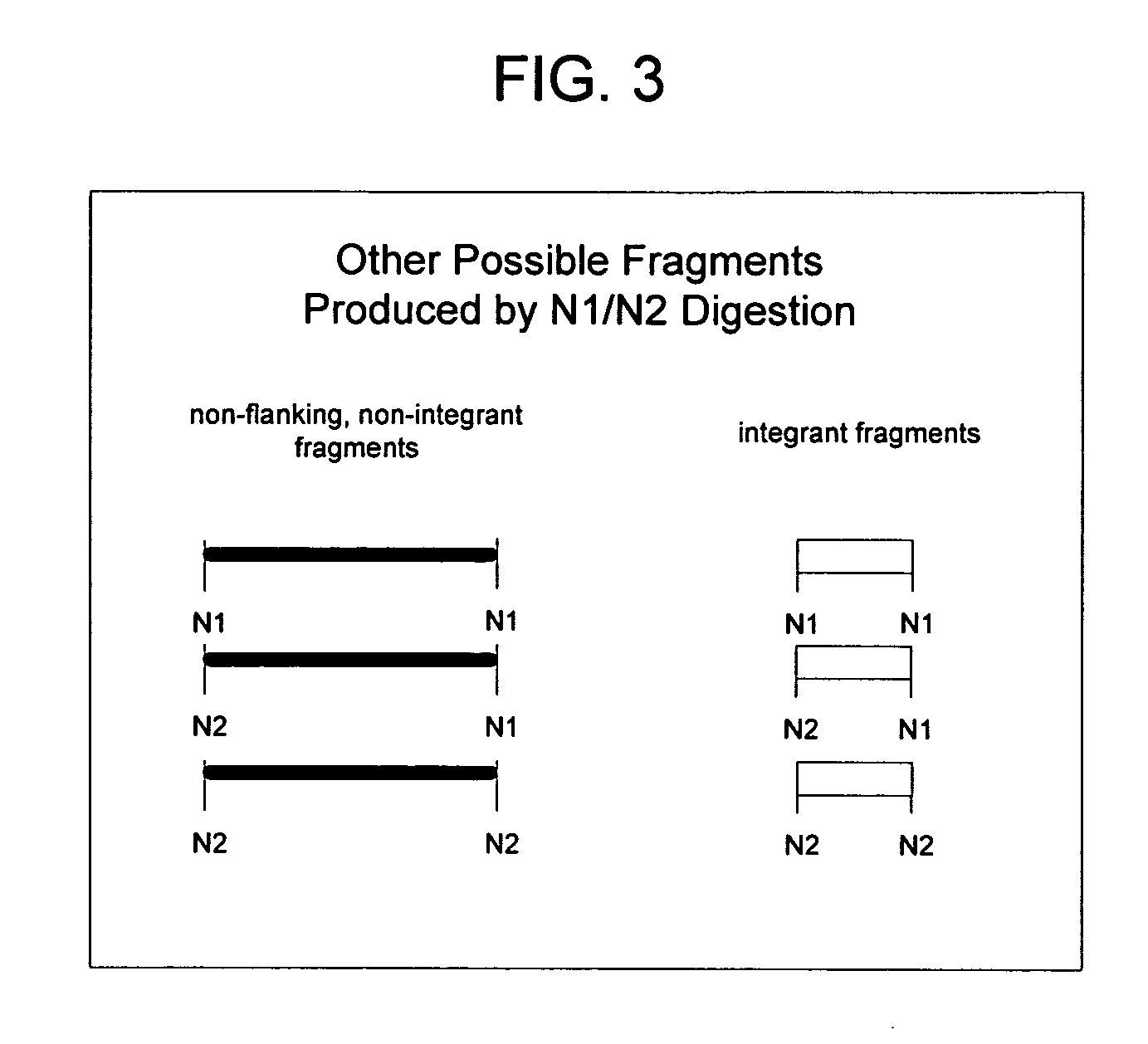Rapid integration site mapping
a rapid integration and site mapping technology, applied in the field of rapid integration site mapping, can solve the problems of significant reduction of possible amplification and cloning biases, and achieve the effects of simple and rapid linker-based amplification, reduced possible amplification and cloning biases, and relatively small resultant amplicons
- Summary
- Abstract
- Description
- Claims
- Application Information
AI Technical Summary
Benefits of technology
Problems solved by technology
Method used
Image
Examples
example 1
Generation of MLV and HIV-1 Integration Site Libraries with Host Cell 3'-Flanking Sequences
[0187] This example demonstrates that MLV and HIV-1 integration site libraries consisting predominantly of host cell 3'-flanking sequences can be generated and sequenced in as little as seven days.
[0188] MLV virus pseudotyped with vesicular stomatitis virus glycoprotein G (VSV-G) was prepared as described (Chen et al., J. Virol., 76:2192-2198, 2002). 5.times.10.sup.5 HeLa cells at 25% confluence were infected with MLV virus of estimated titer of 10.sup.8 infection units (IU) / ml for 4 hours with 8 .mu.g / ml of polybrene. The supernatants were removed and fresh media was added. The cells were harvested at 48 hours post infection.
[0189] pLenti6-GFP virus, a VSV-G pseudotyped HIV-1 based vector, was prepared according to the manufacturer's protocol (Invitrogen, Carlsbed, Calif.) to infect HeLa cells as described above with an estimated titer of 10.sup.5 IU / ml. Wild type HIV-1 virus was produced by ...
example 2
Mapping and Analysis of MLV and HIV-1 Integration Sites
[0195] This example demonstrates that substantial numbers of HIV-1 and MLV integration sites can be accurately mapped to the human genome from sequence data collected as described in Example 1. Mapping results demonstrate that MLV has a preference for integration in the region surrounding the transcriptional start sites in the human genome, while HIV-1 prefers to integrate in the transcribed region of human genes.
[0196] The BLAT program (Kent, Genome Res., 12(4):656-664, 2002) was used to map sequences generated in Example 1 to the human genome as provided in the University of California Santa Cruz (UCSC) Human Genome Project Working Draft, November 2002 freeze (Karolchik et al., Nucl. Acids Res., 31:51-54, 2003). All analysis used the annotation database specific to that build. A sequence was only considered to be from a genuine integration event if it (1) contained both the 3'LTR sequence from the nested primer to the end of 3...
example 3
No Detectable Bias is Introduced by Mapping Methods
[0212] This example demonstrates that that the MLV and HIV-1 integrations identified in Example 1 were not biased by the in vitro amplification technique used to isolate them.
[0213] One concern in cloning and mapping of a large number of retroviral integration sites to the genome using conventional PCR and computational methods, is that biases to the data can be introduced. In contrast, no detectable bias was introduced using the methods disclosed herein.
[0214] PCR is known to work more efficiently on shorter templates in a mixed population of templates. The key to avoiding amplification bias is to generate short, similar sized fragments (see, for example, Cheung and Nelson, Proc. Natl. Acad. Sci. USA, 93:14676-14679, 1996). Because of the availability of essentially the entire human genome sequence, computational restriction enzyme digestions were performed with several candidate enzymes, including MseI, Rsa I, and Taq I. MseI (hav...
PUM
| Property | Measurement | Unit |
|---|---|---|
| Tm | aaaaa | aaaaa |
| volume | aaaaa | aaaaa |
| temperature | aaaaa | aaaaa |
Abstract
Description
Claims
Application Information
 Login to View More
Login to View More - R&D
- Intellectual Property
- Life Sciences
- Materials
- Tech Scout
- Unparalleled Data Quality
- Higher Quality Content
- 60% Fewer Hallucinations
Browse by: Latest US Patents, China's latest patents, Technical Efficacy Thesaurus, Application Domain, Technology Topic, Popular Technical Reports.
© 2025 PatSnap. All rights reserved.Legal|Privacy policy|Modern Slavery Act Transparency Statement|Sitemap|About US| Contact US: help@patsnap.com



